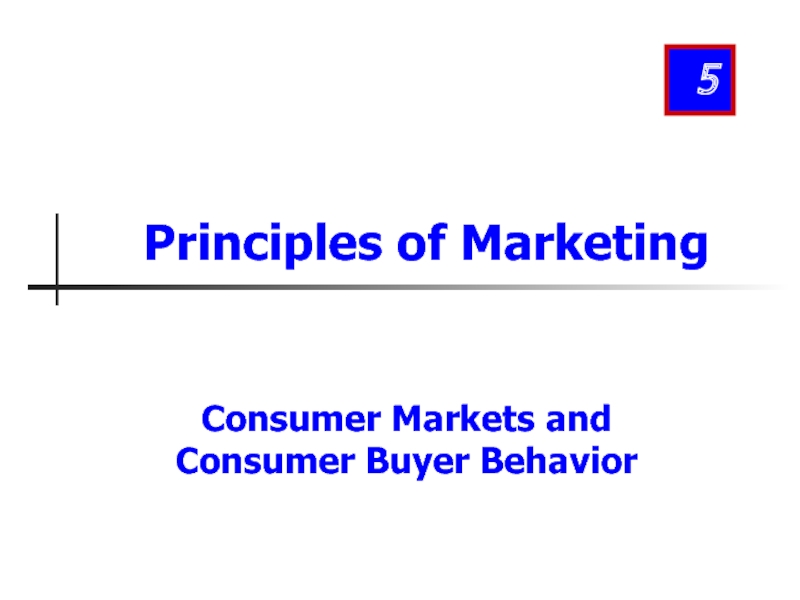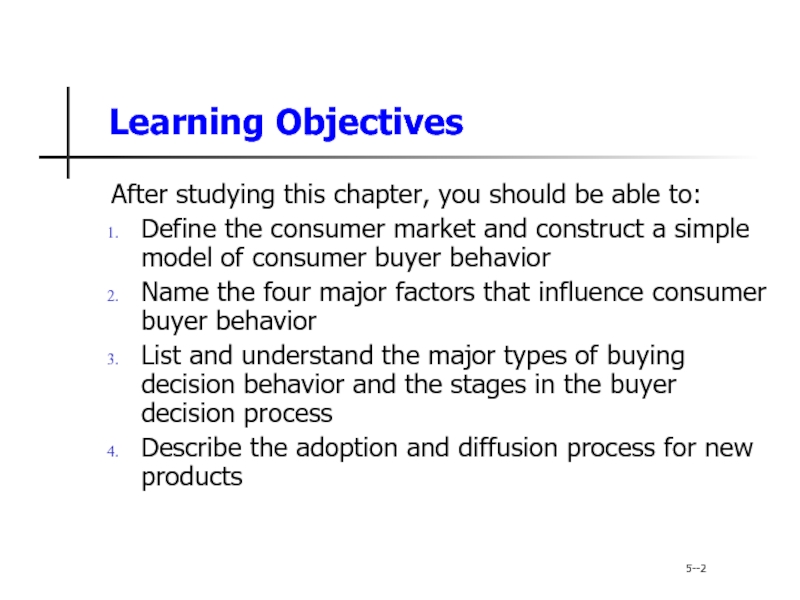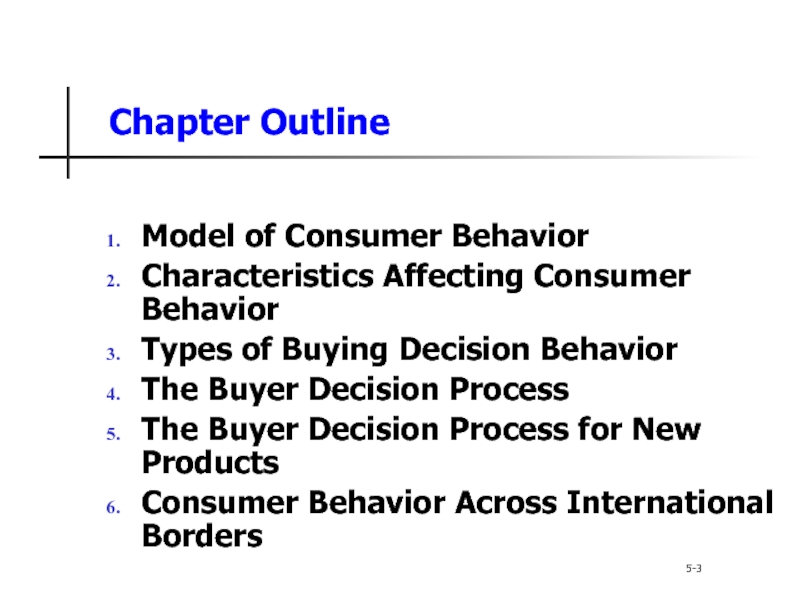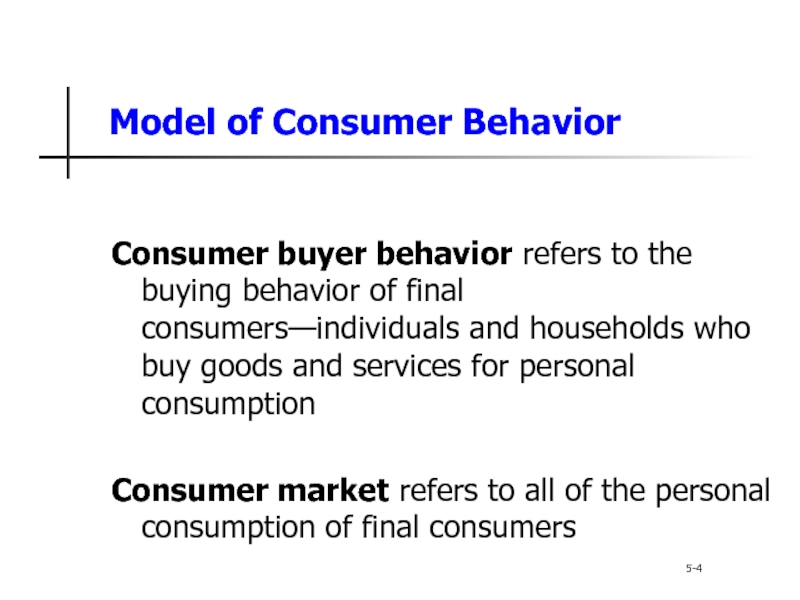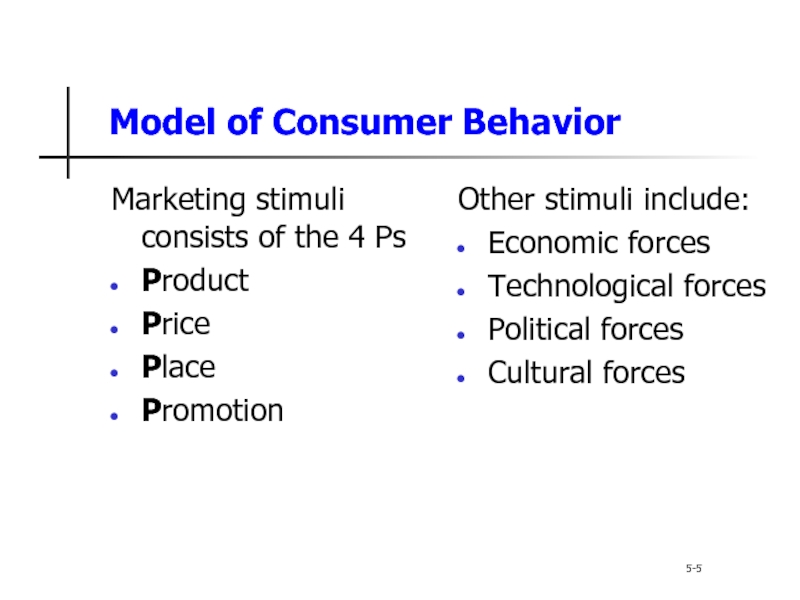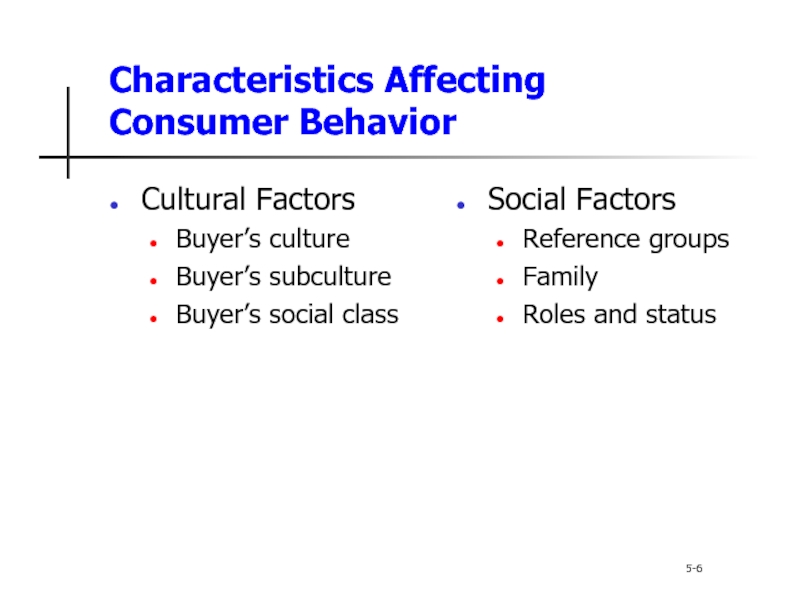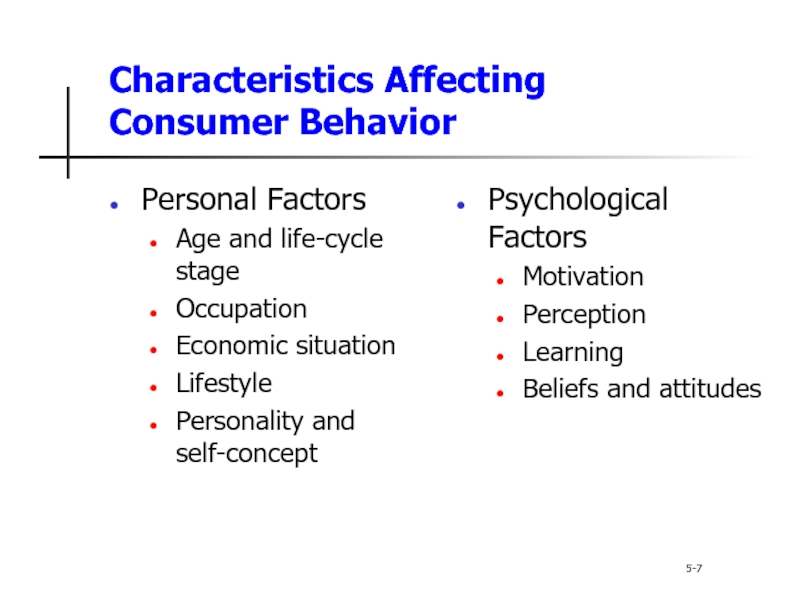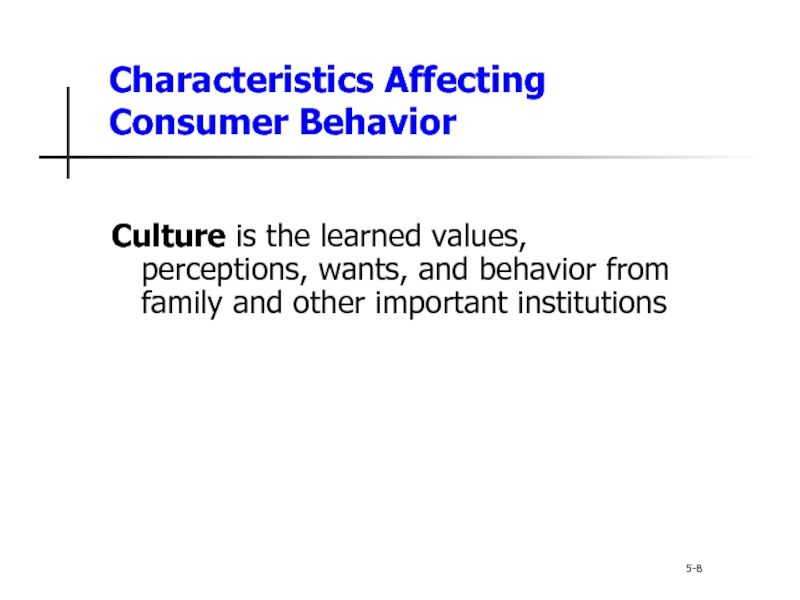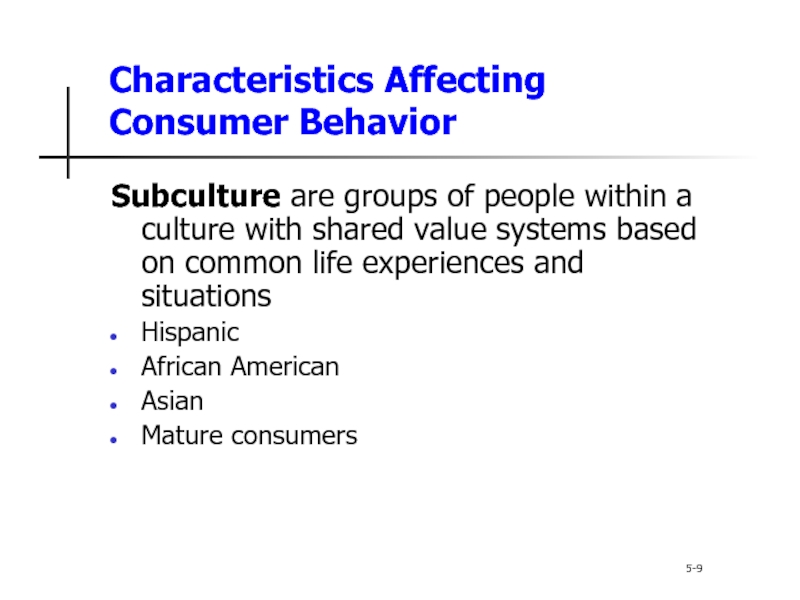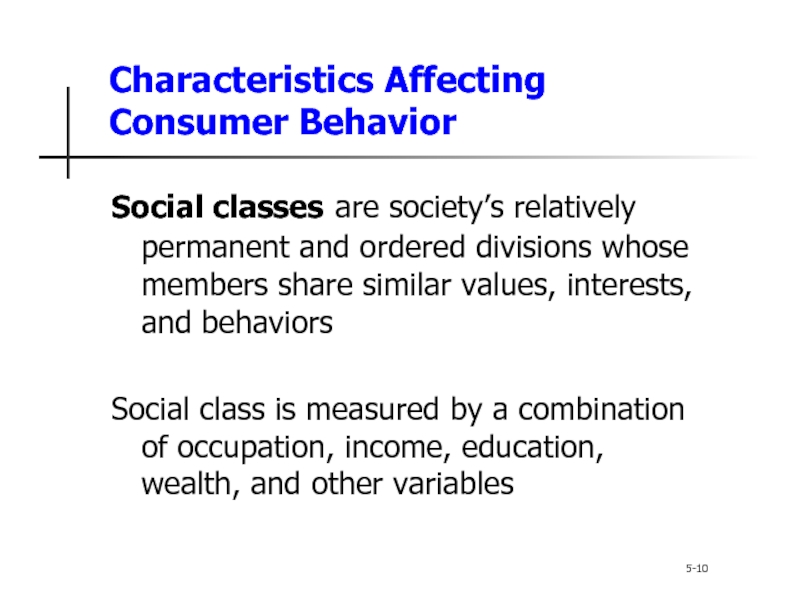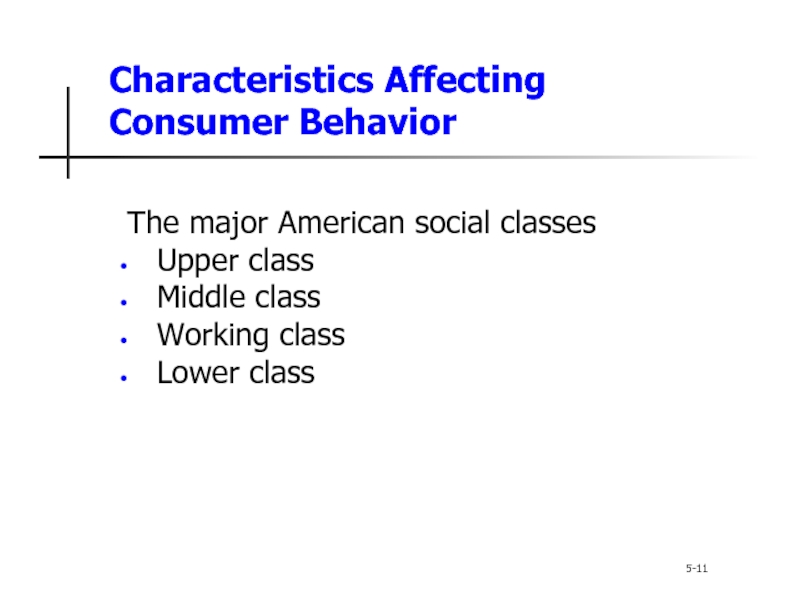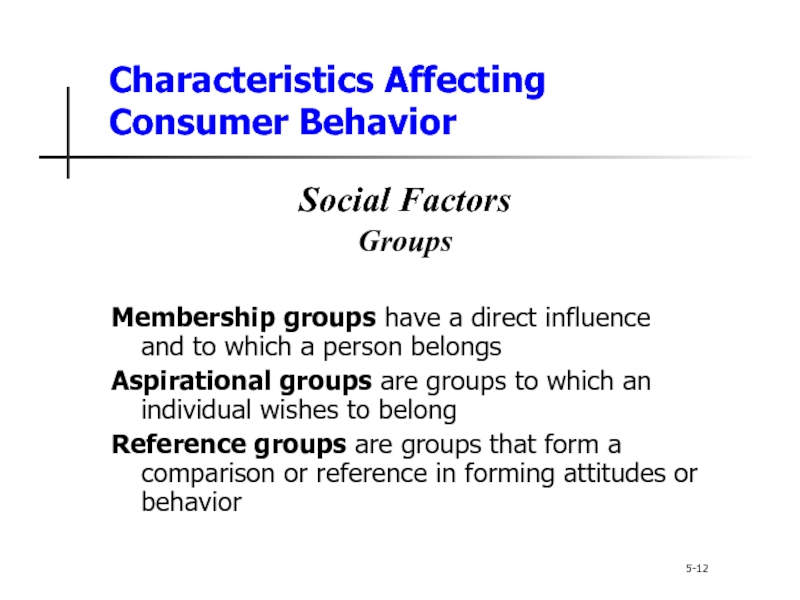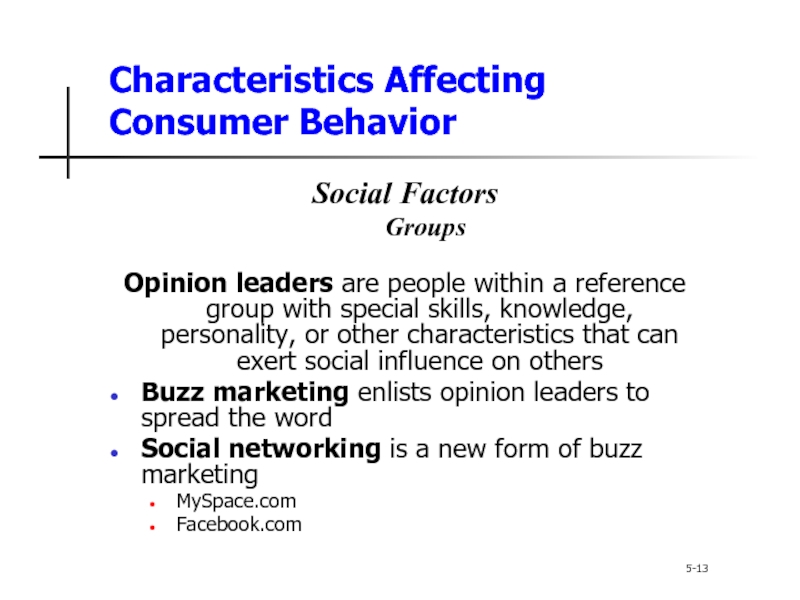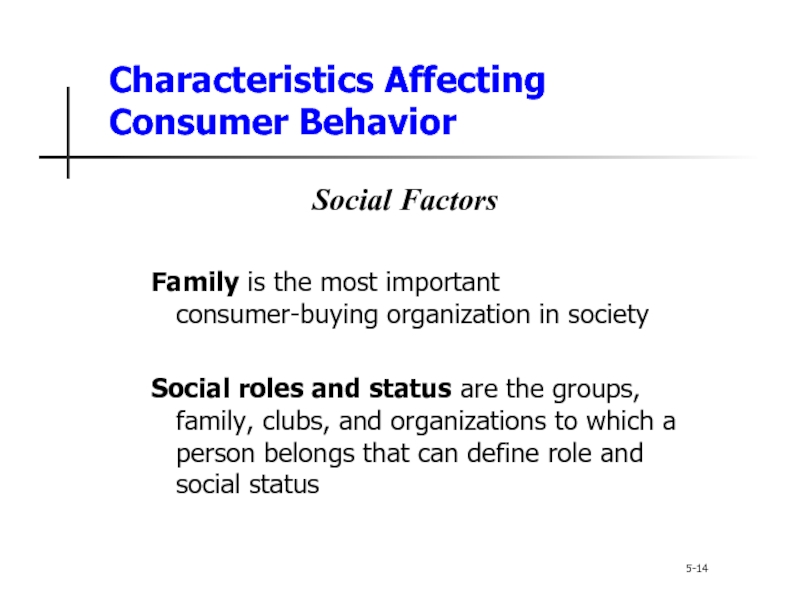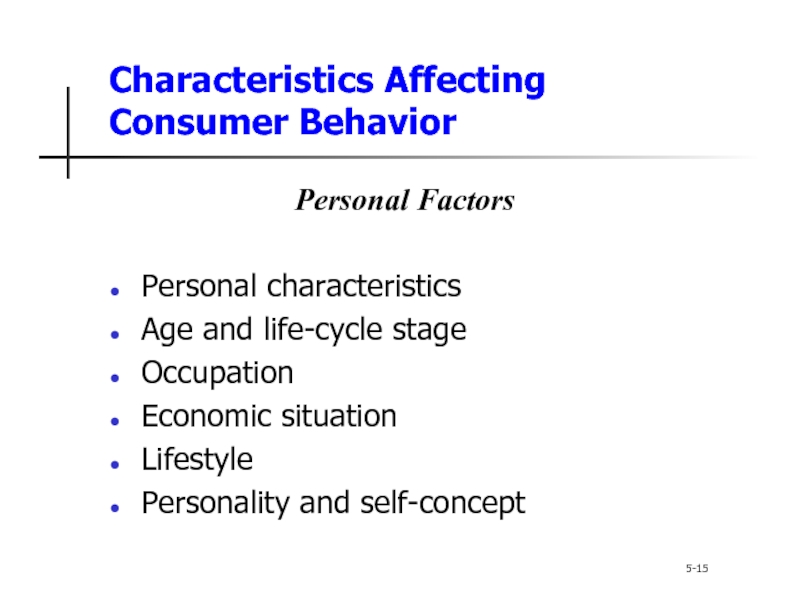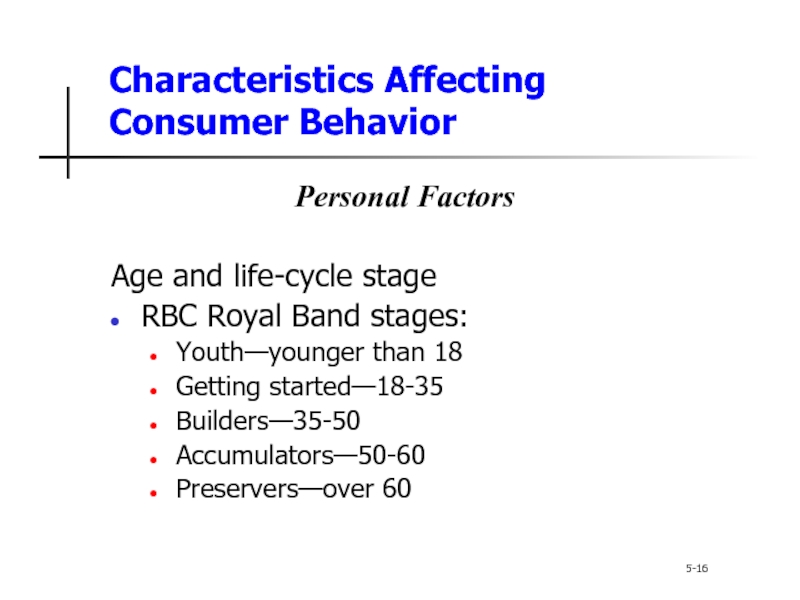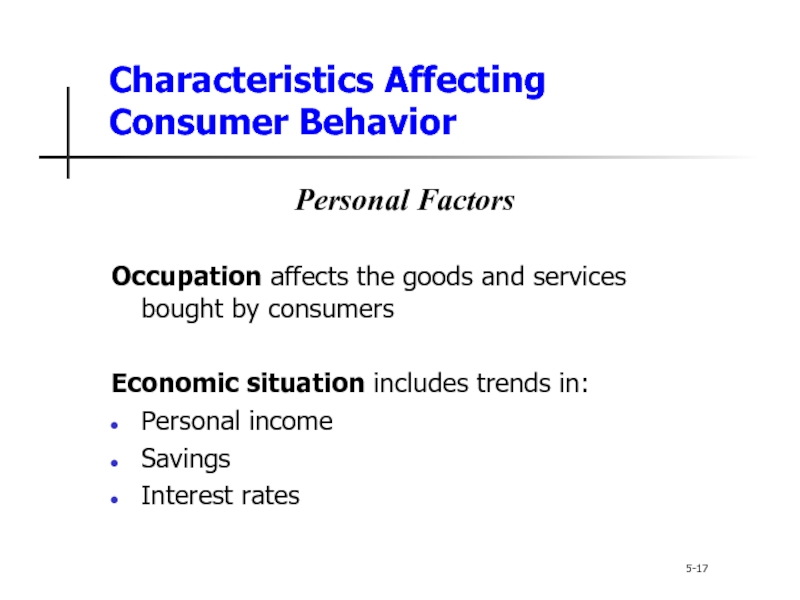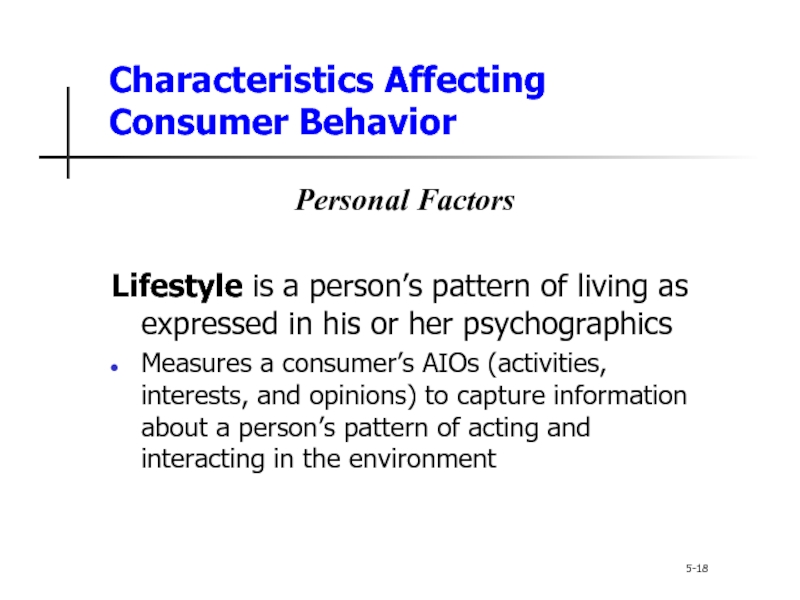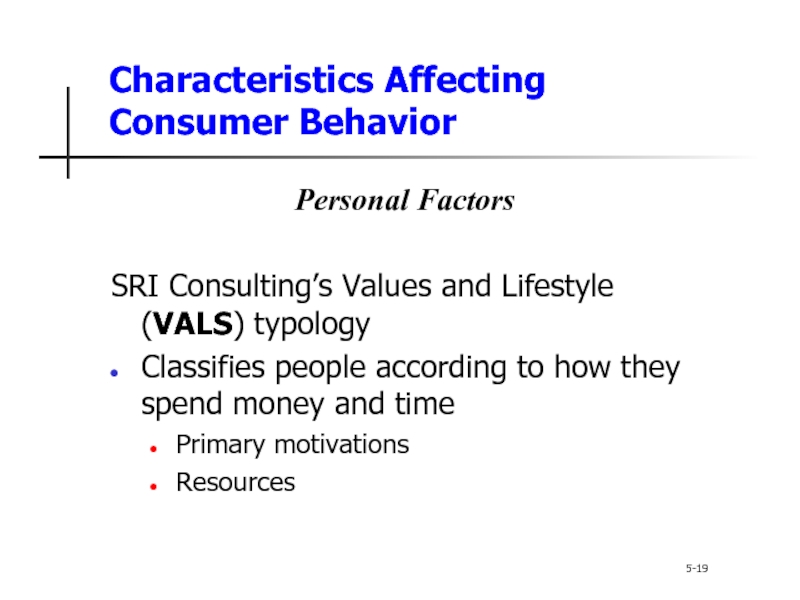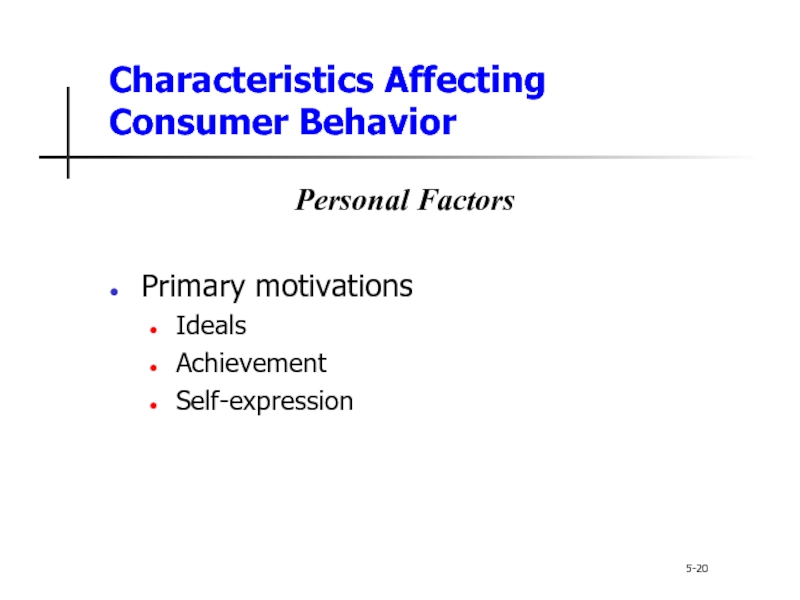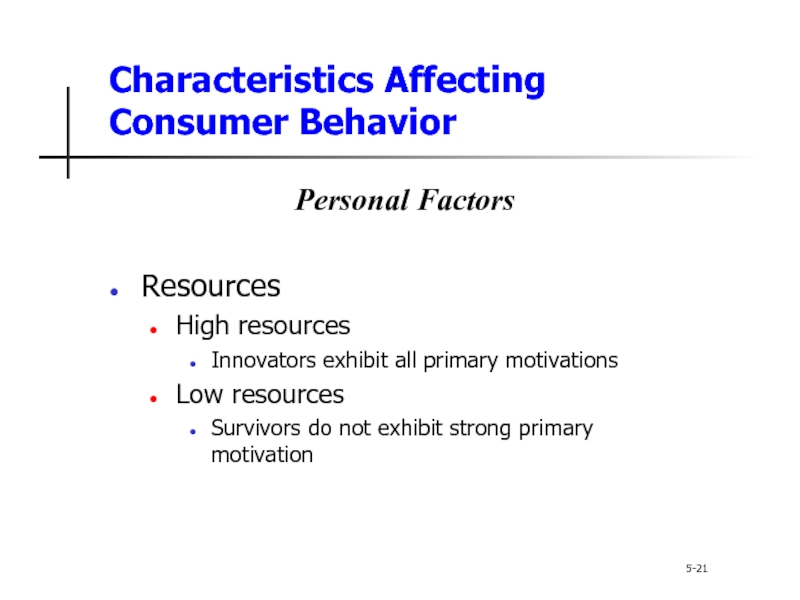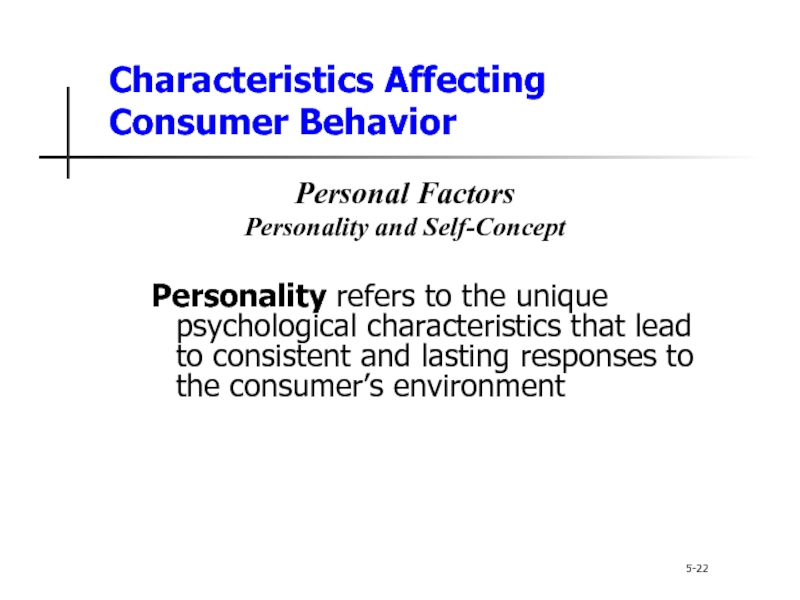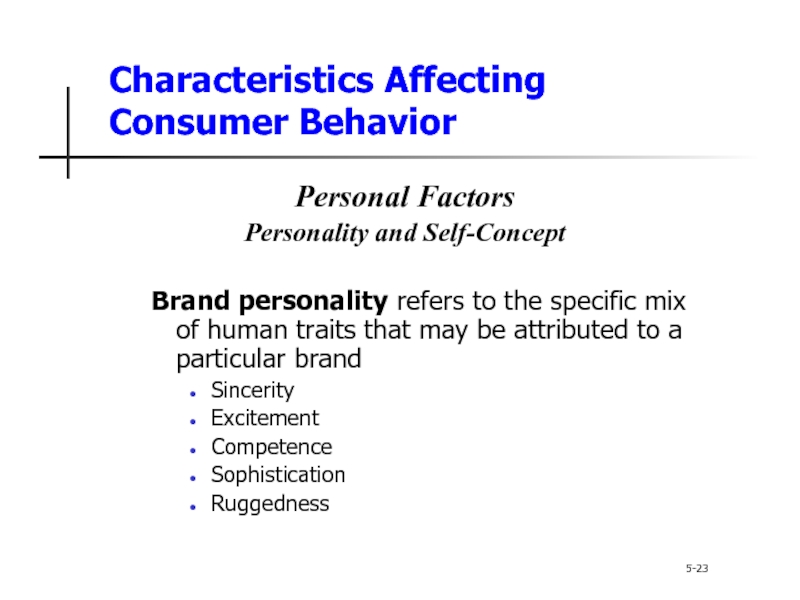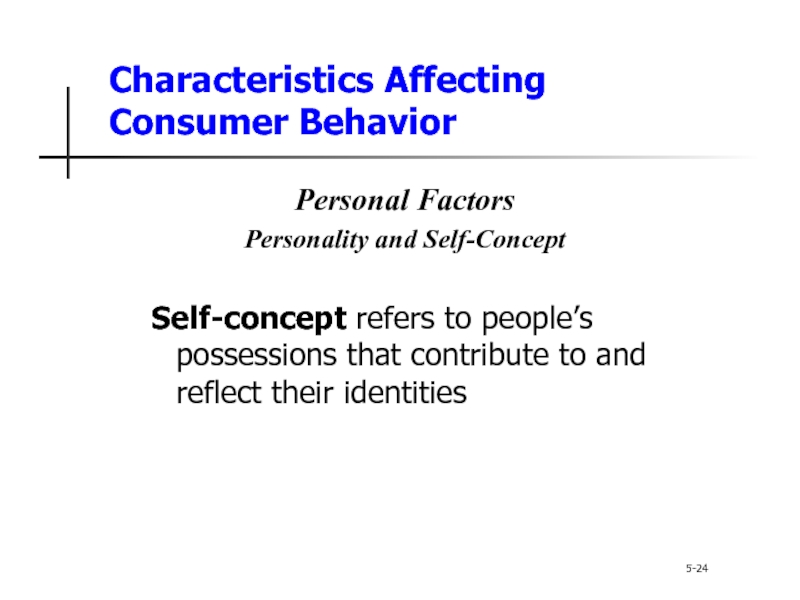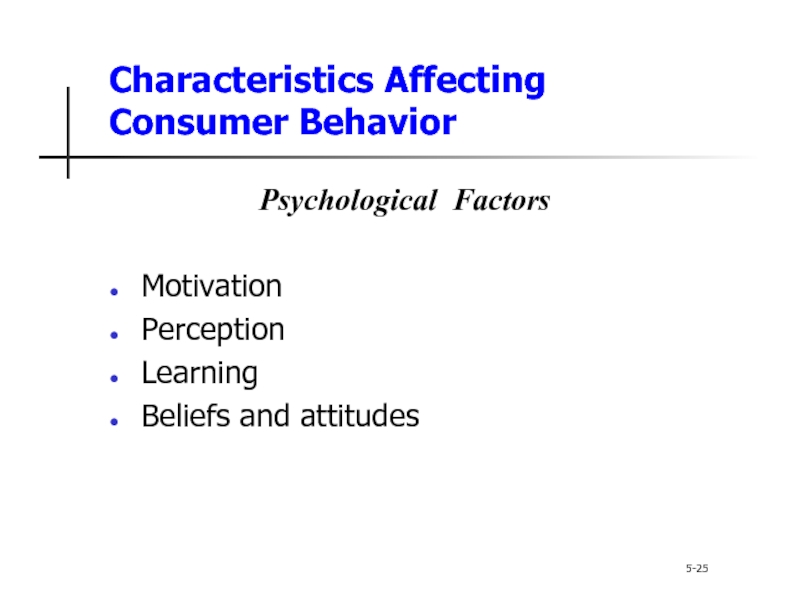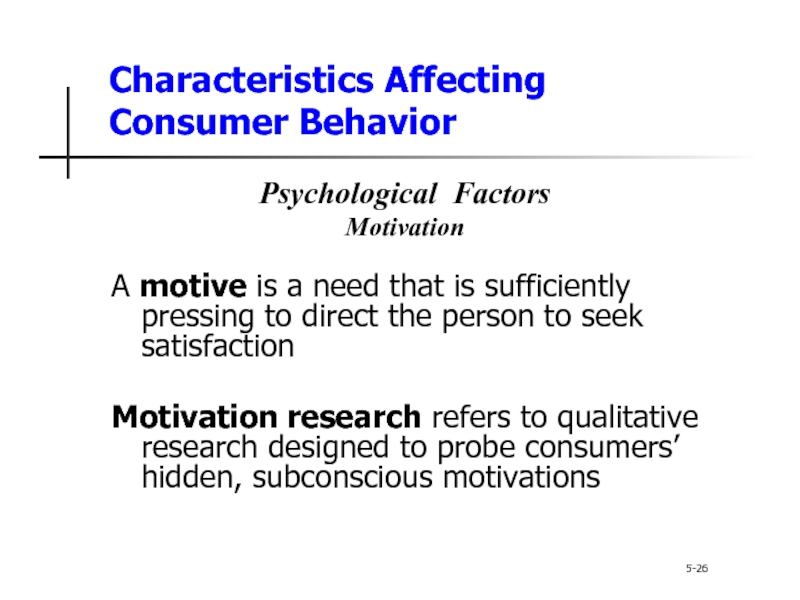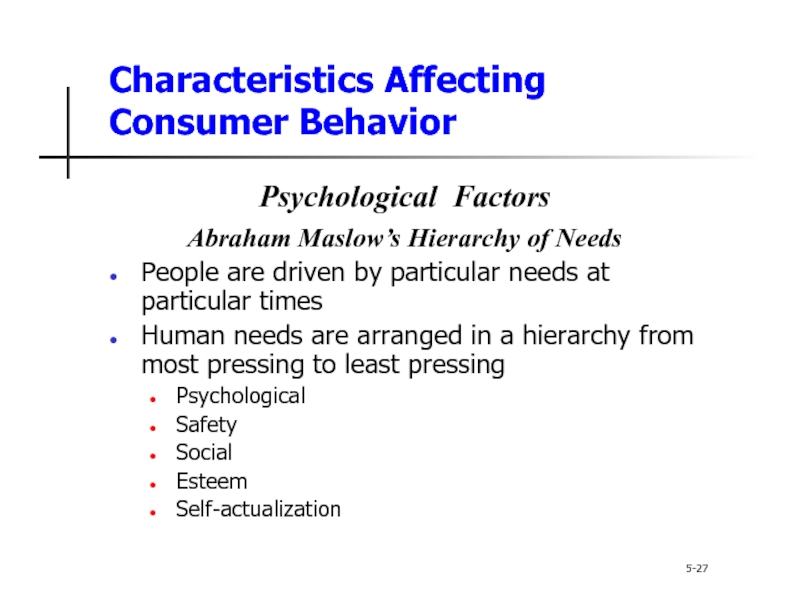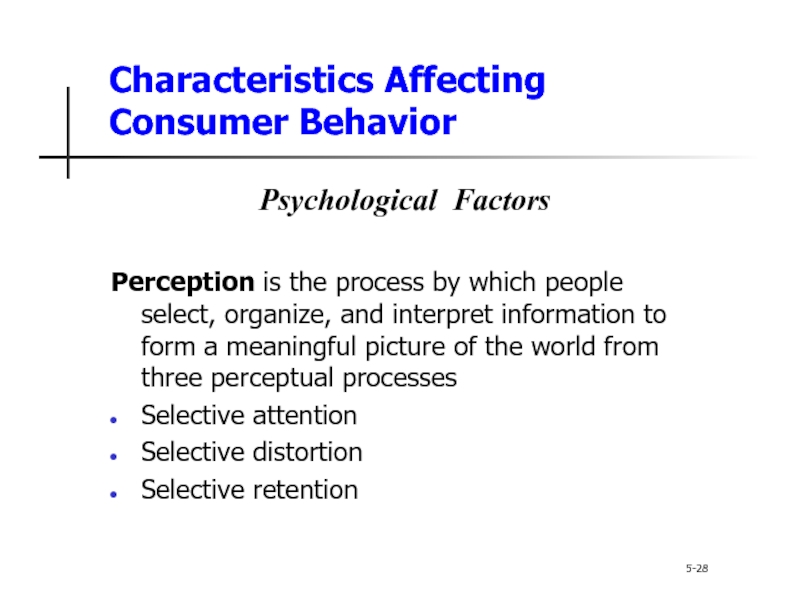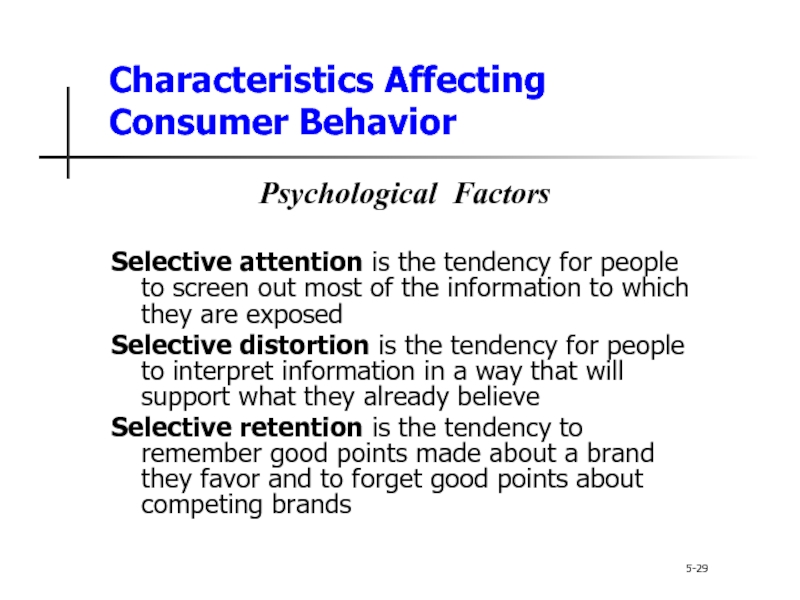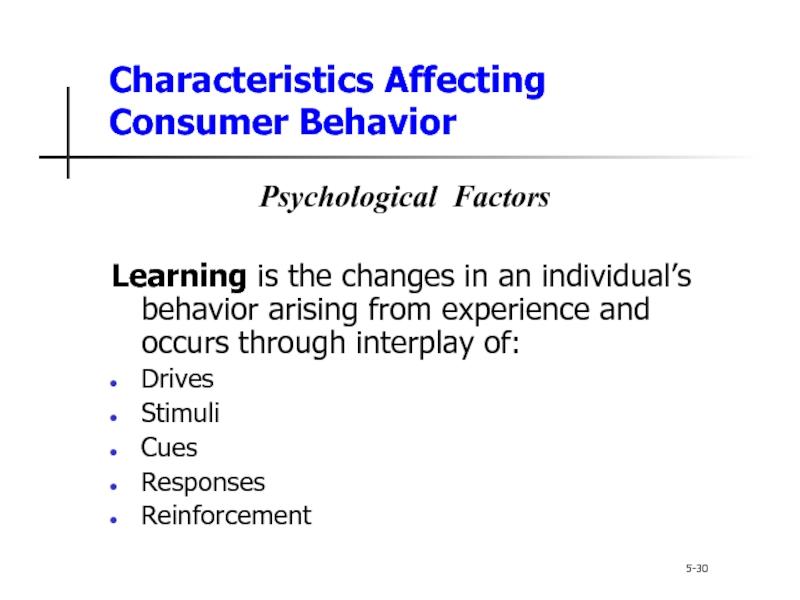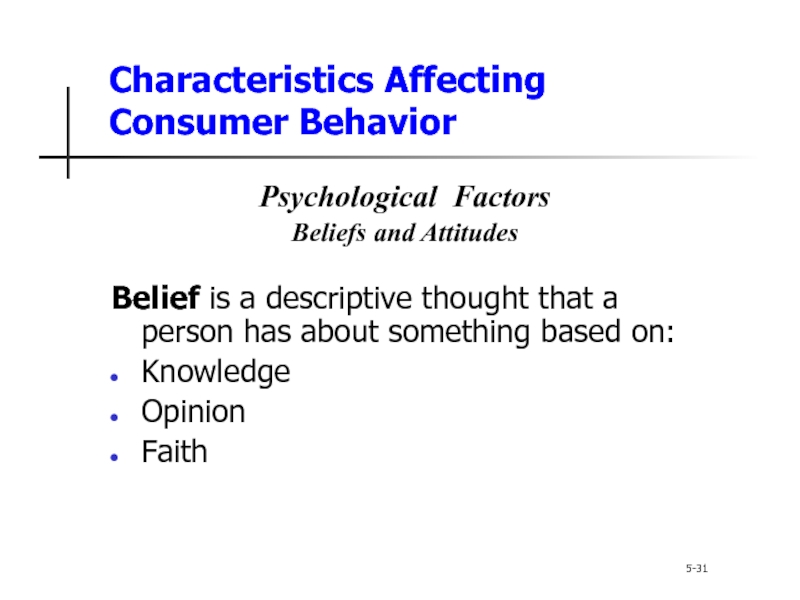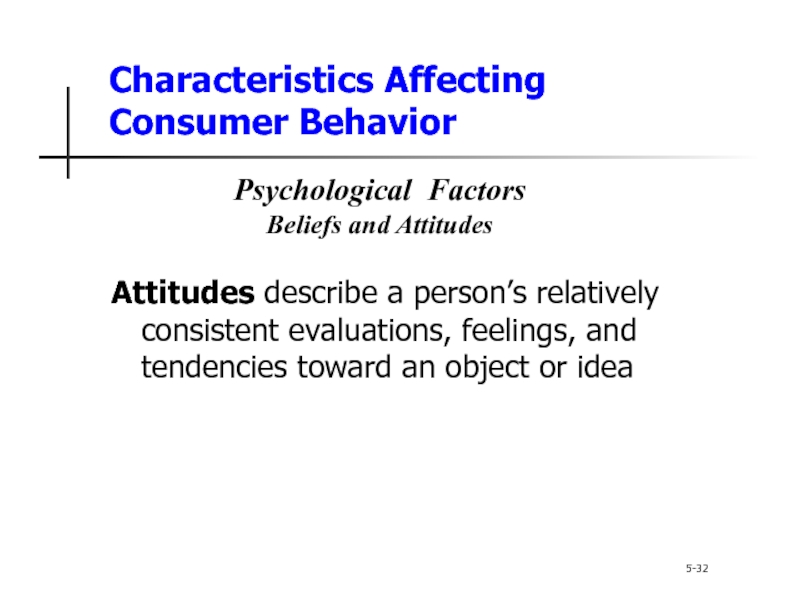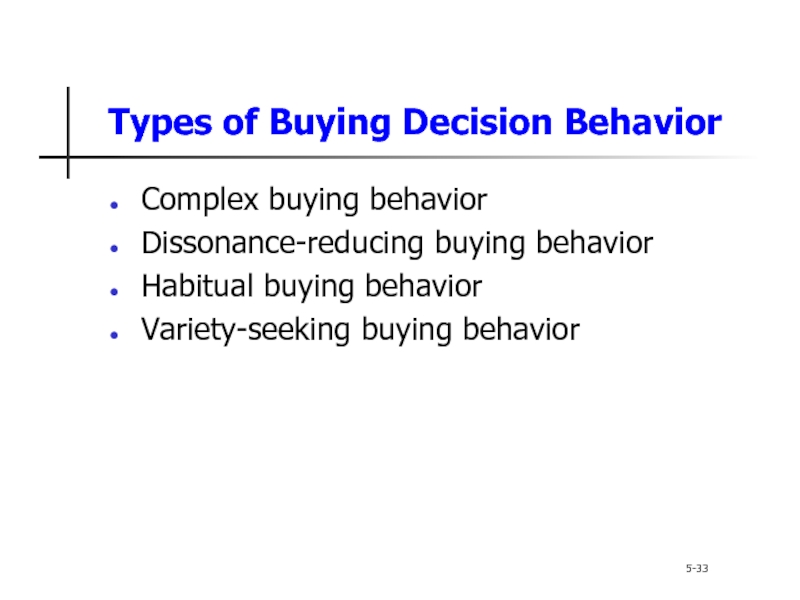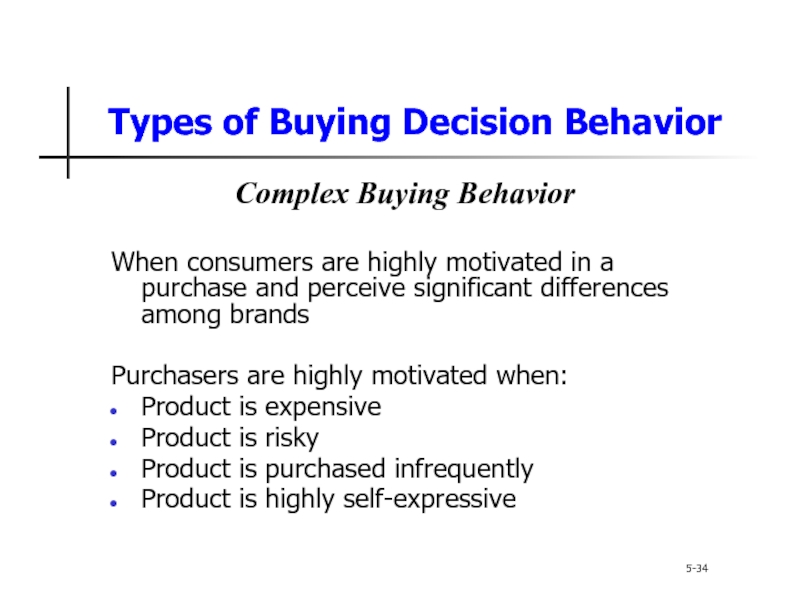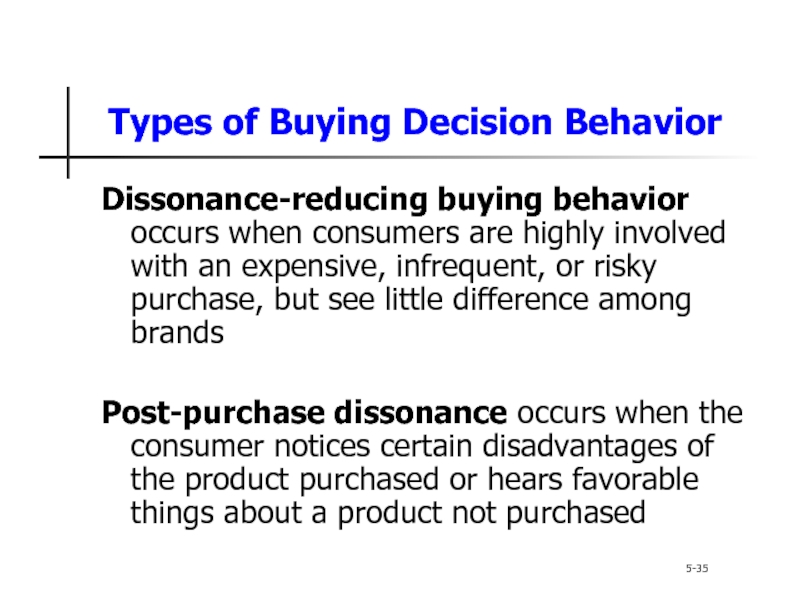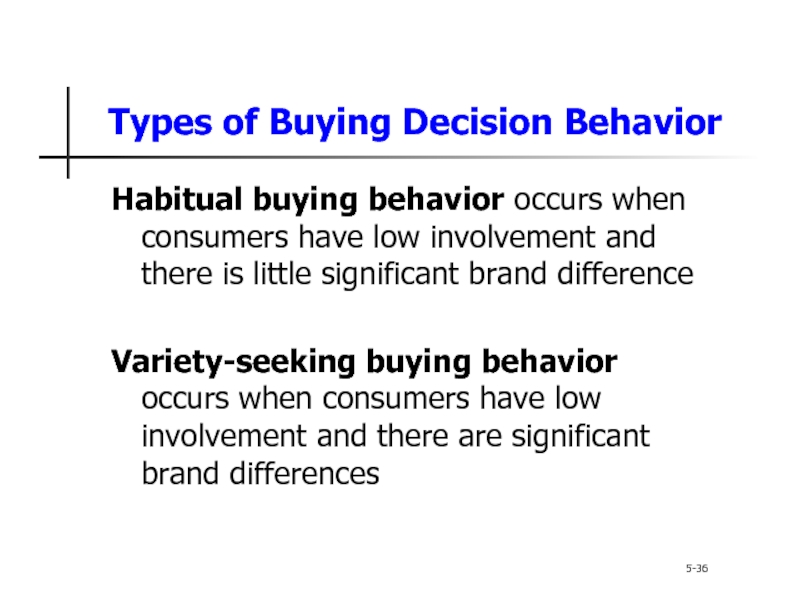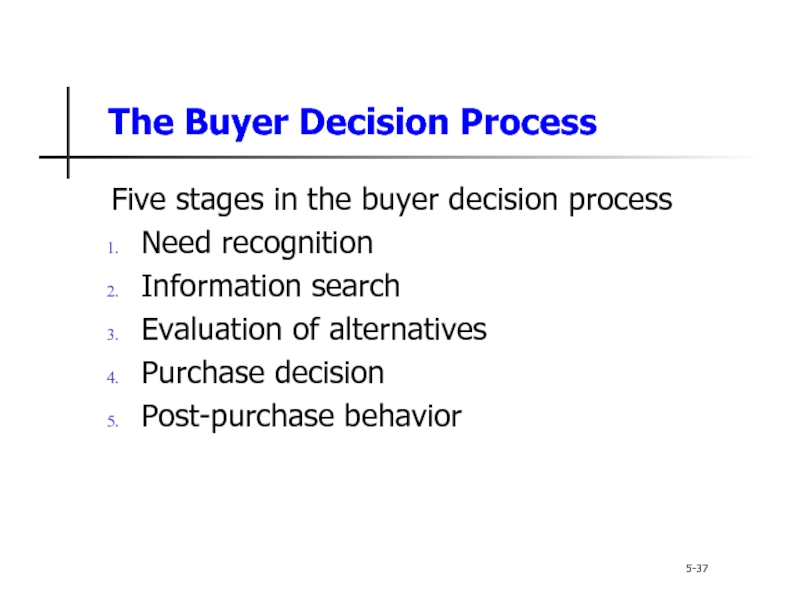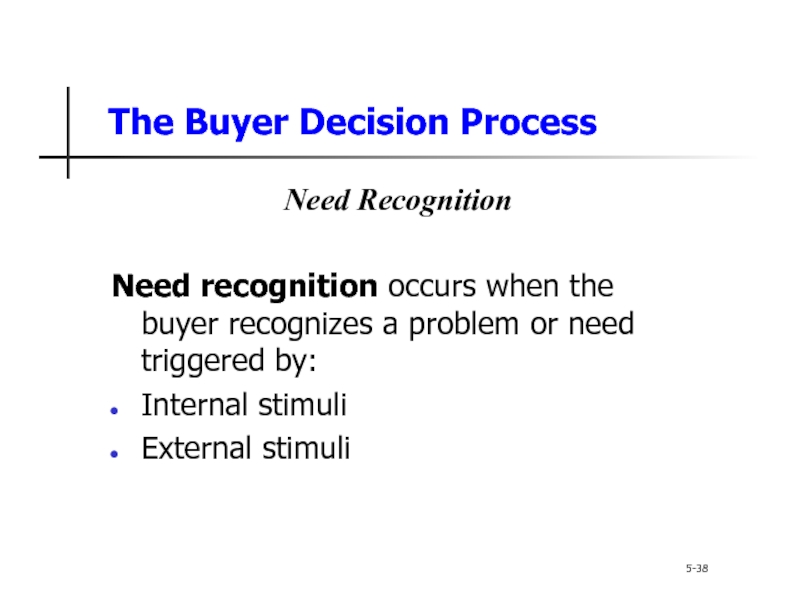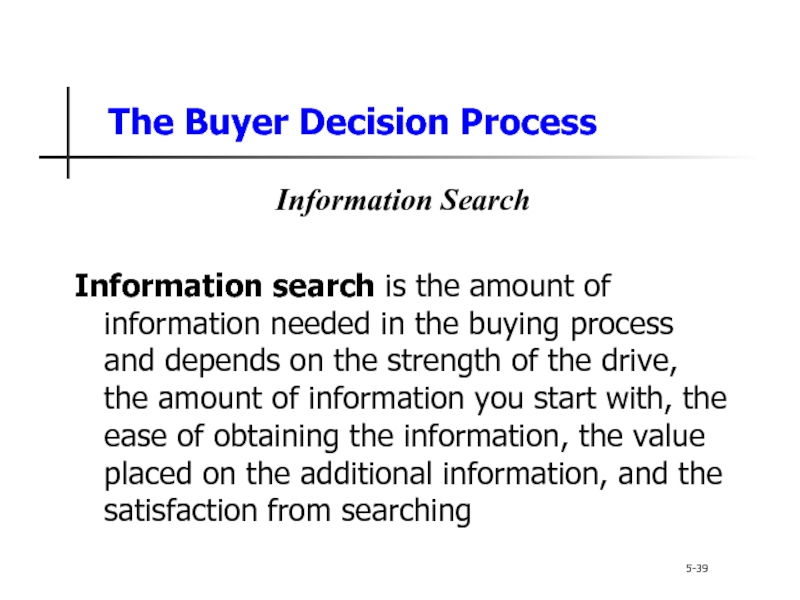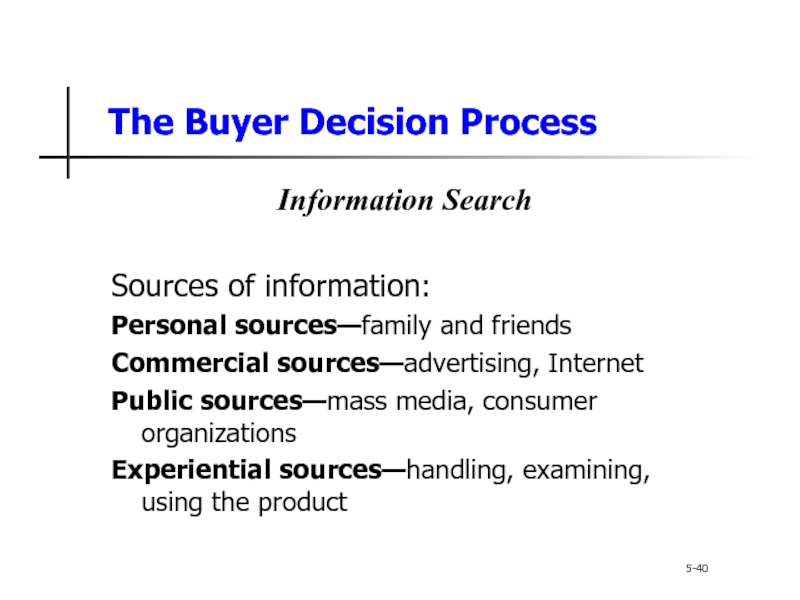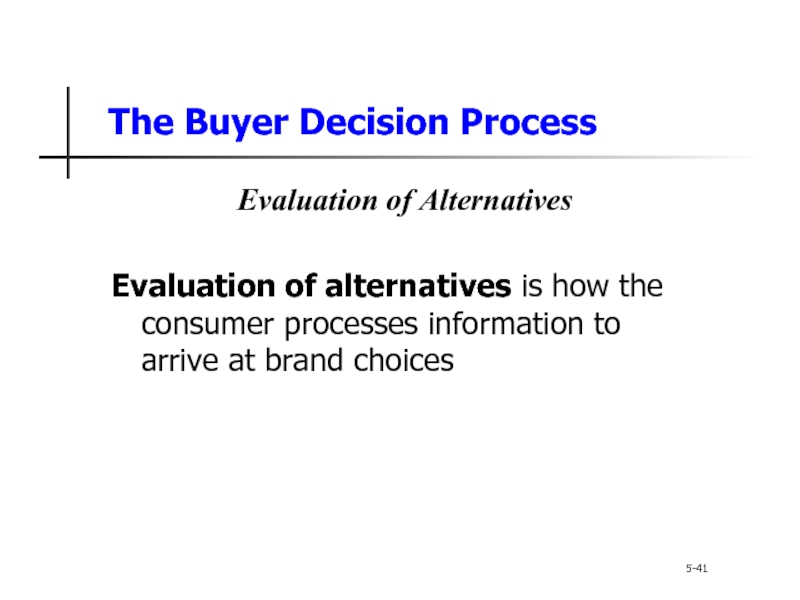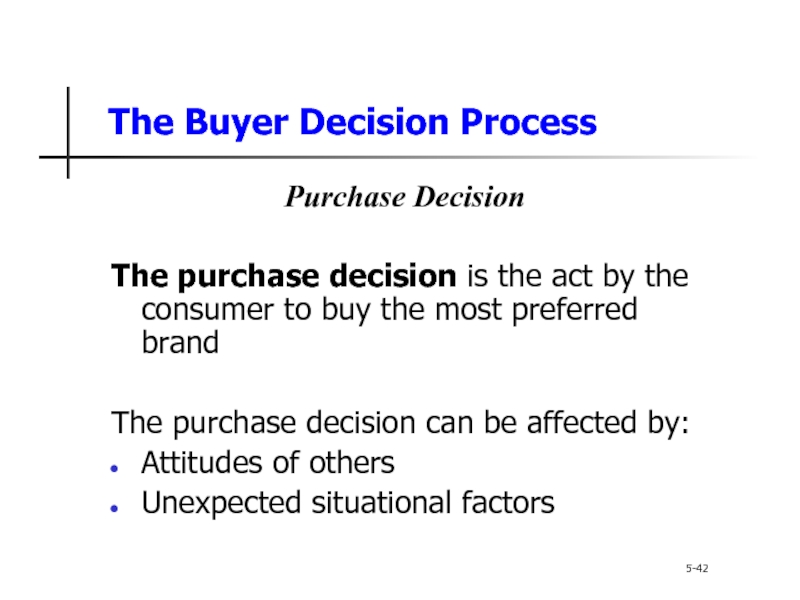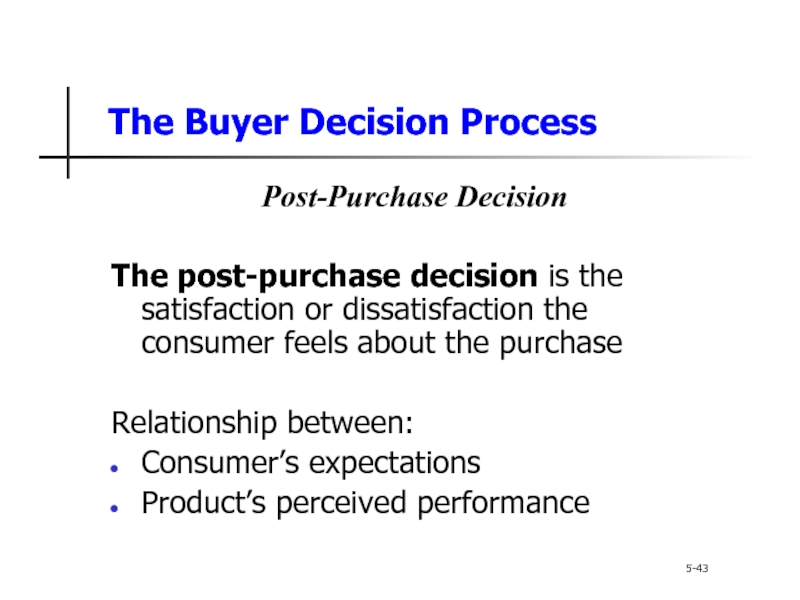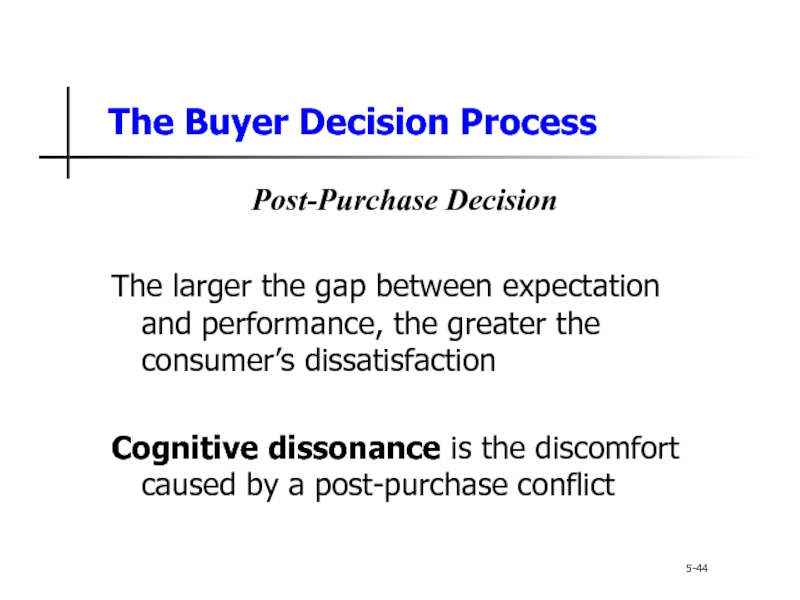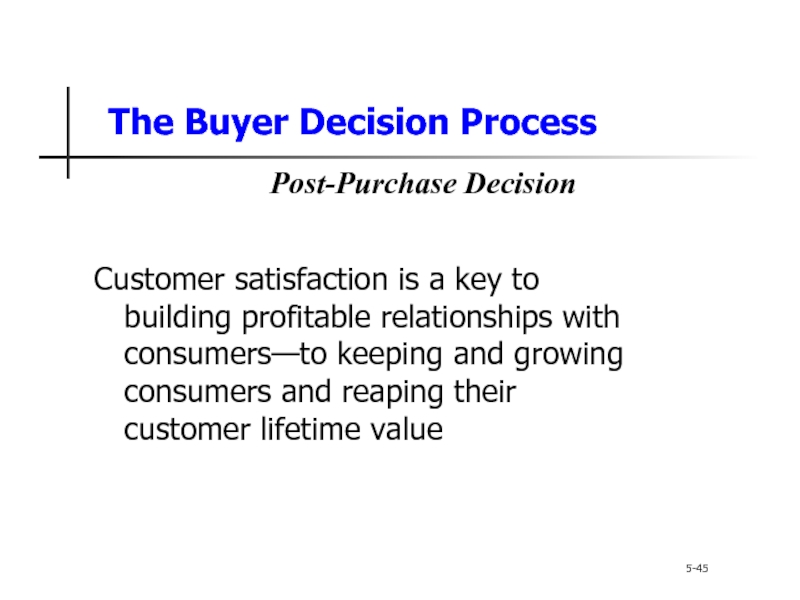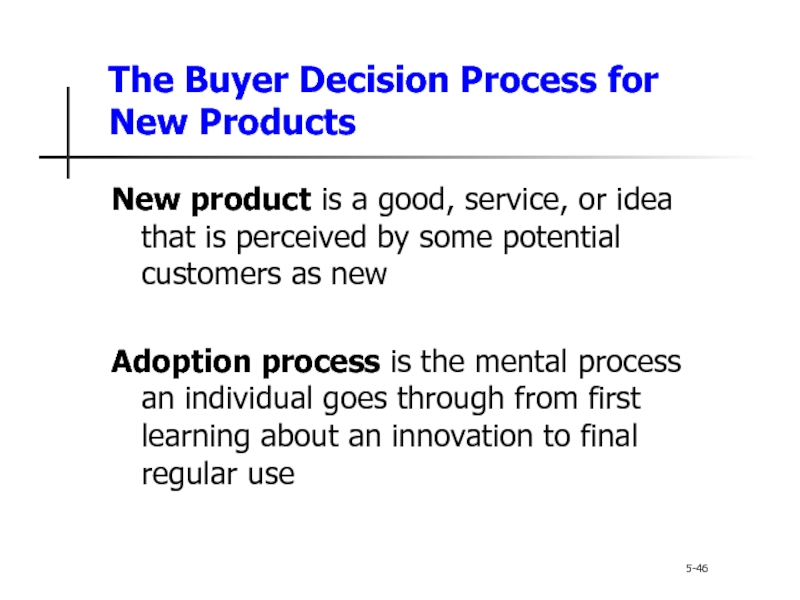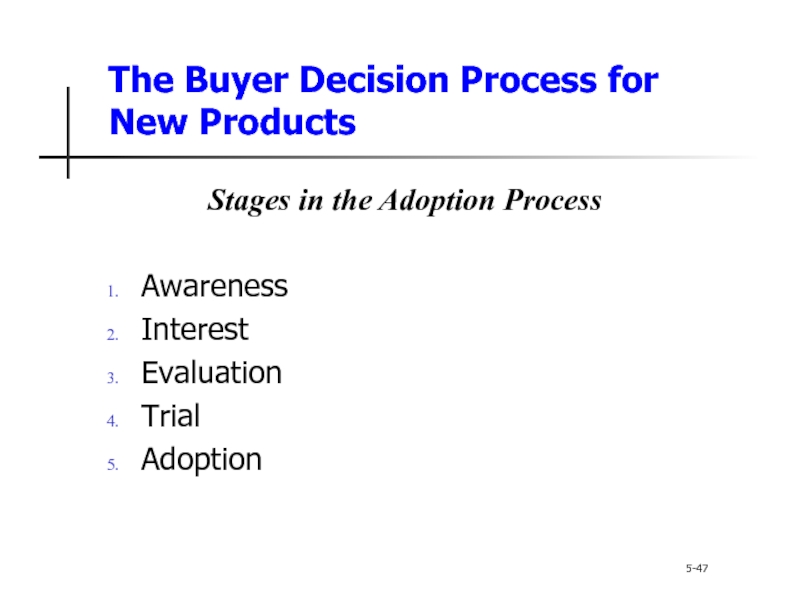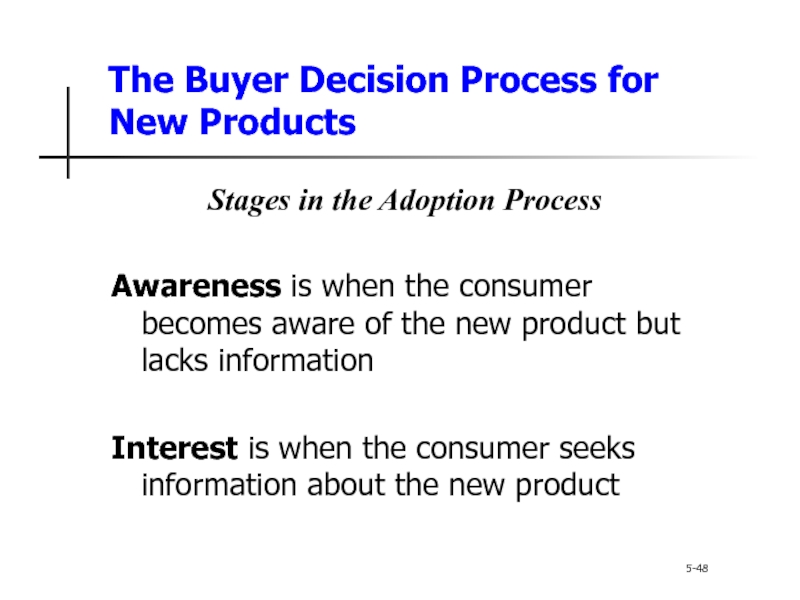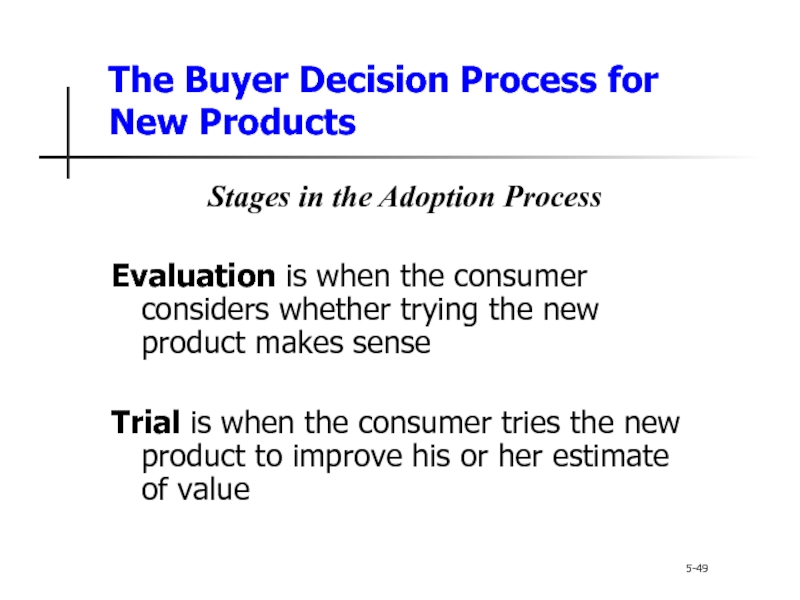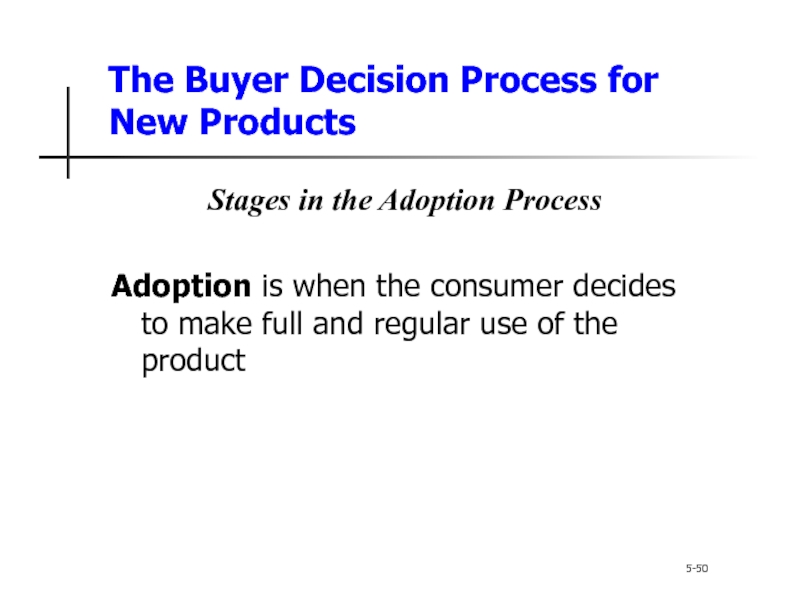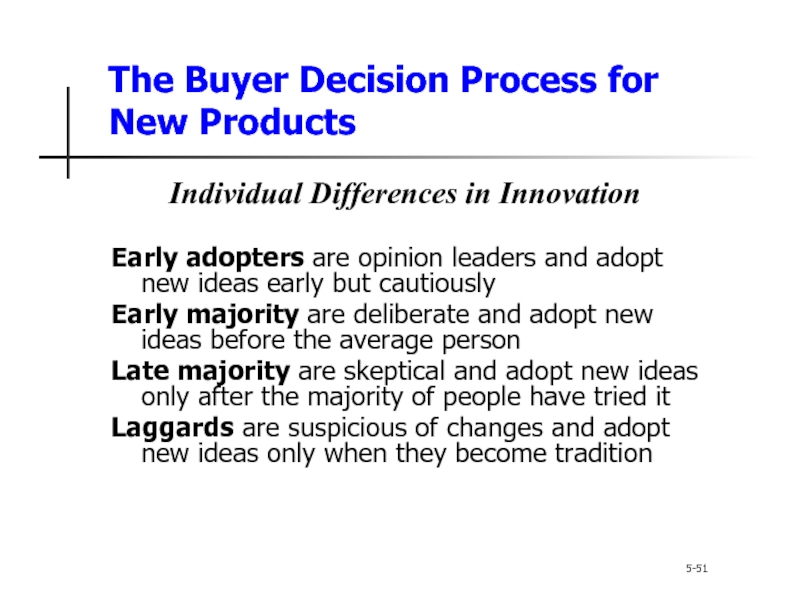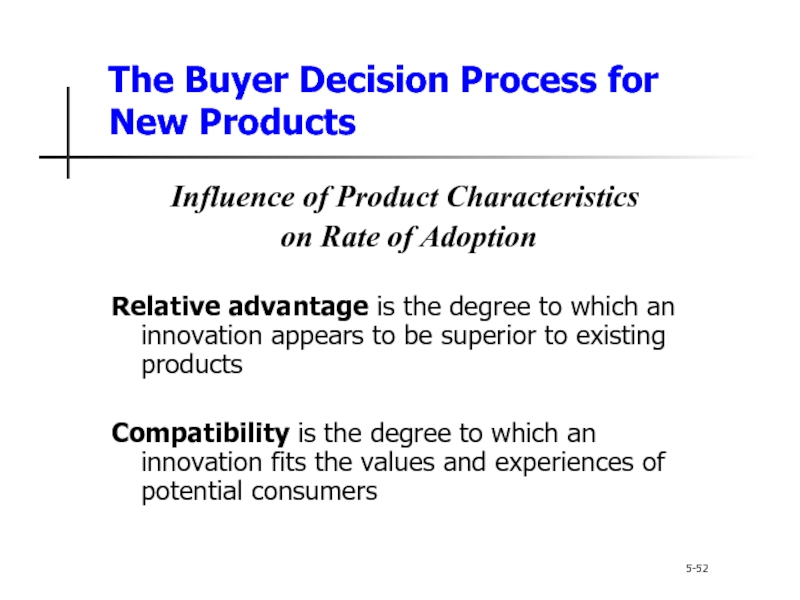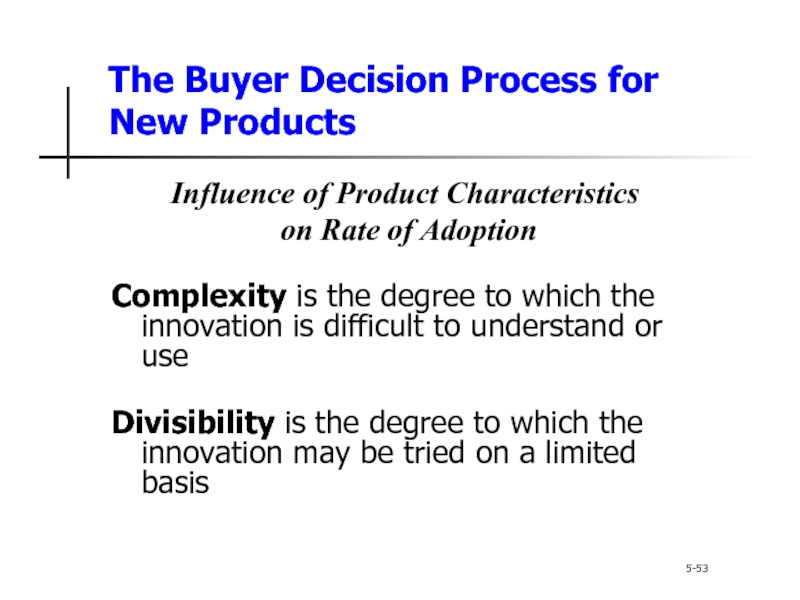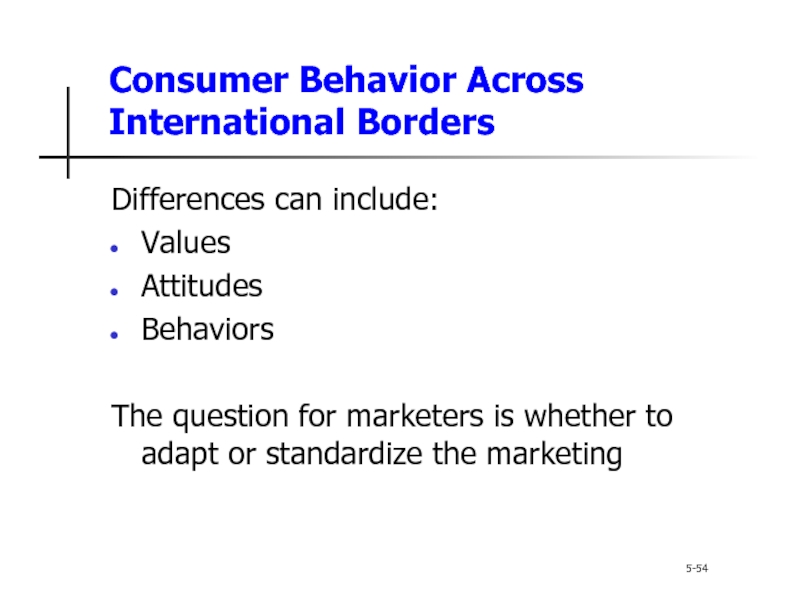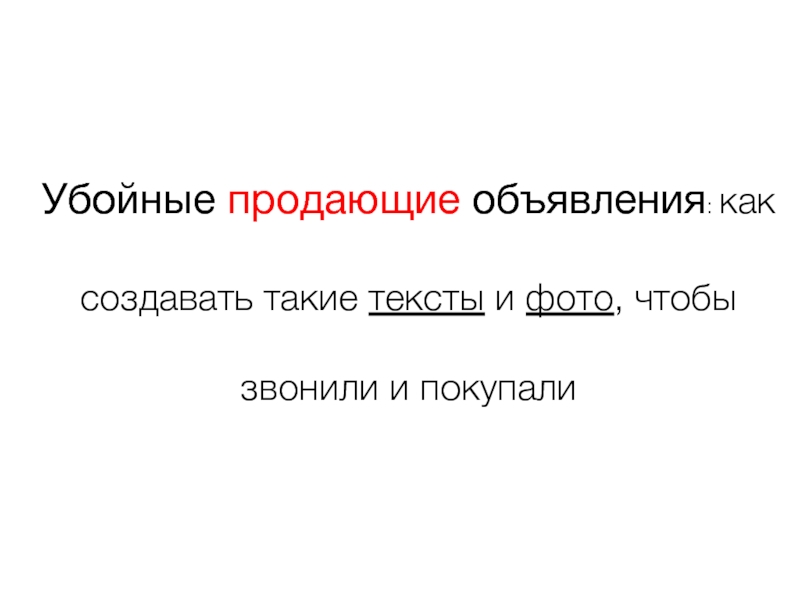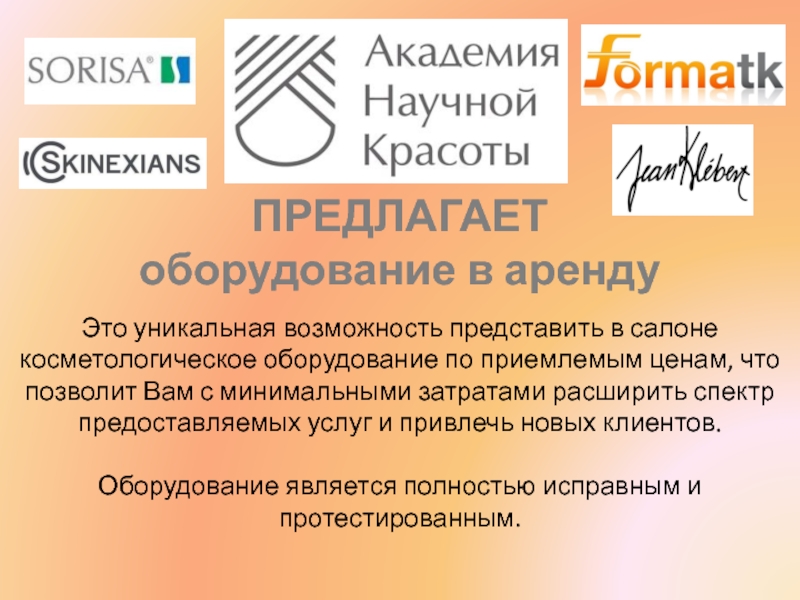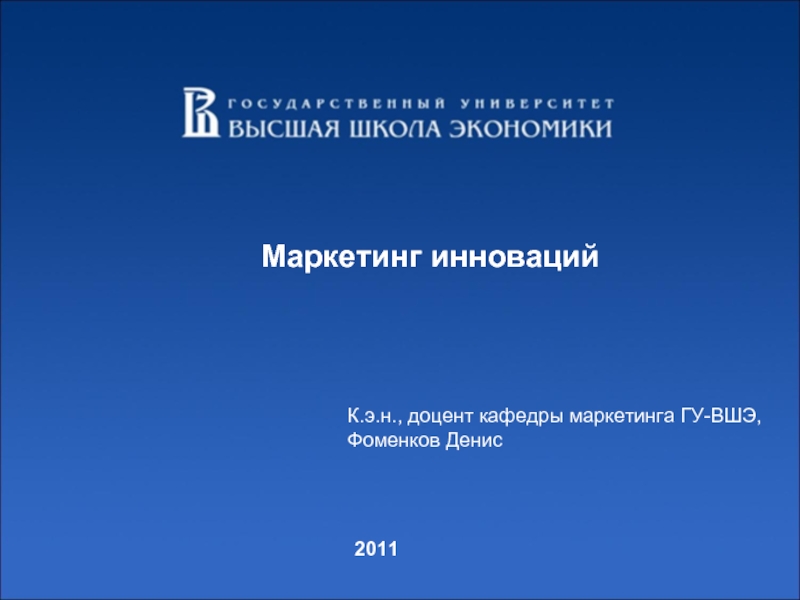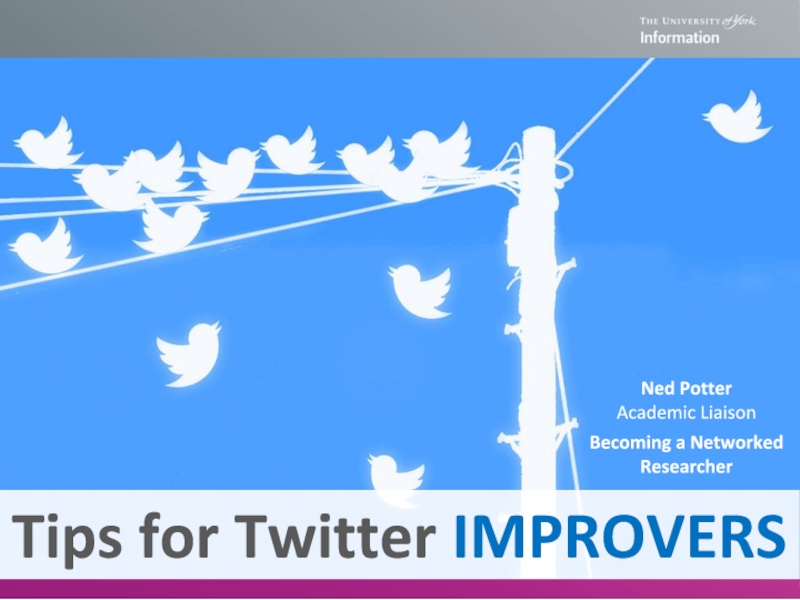- Главная
- Разное
- Дизайн
- Бизнес и предпринимательство
- Аналитика
- Образование
- Развлечения
- Красота и здоровье
- Финансы
- Государство
- Путешествия
- Спорт
- Недвижимость
- Армия
- Графика
- Культурология
- Еда и кулинария
- Лингвистика
- Английский язык
- Астрономия
- Алгебра
- Биология
- География
- Детские презентации
- Информатика
- История
- Литература
- Маркетинг
- Математика
- Медицина
- Менеджмент
- Музыка
- МХК
- Немецкий язык
- ОБЖ
- Обществознание
- Окружающий мир
- Педагогика
- Русский язык
- Технология
- Физика
- Философия
- Химия
- Шаблоны, картинки для презентаций
- Экология
- Экономика
- Юриспруденция
Principles of marketing. Consumer markets and consumer buyer behavior презентация
Содержание
- 1. Principles of marketing. Consumer markets and consumer buyer behavior
- 2. Learning Objectives After studying this chapter, you
- 3. Chapter Outline Model of Consumer Behavior
- 4. Model of Consumer Behavior Consumer buyer
- 5. Model of Consumer Behavior 5-5 Marketing stimuli
- 6. Characteristics Affecting Consumer Behavior 5-6
- 7. Characteristics Affecting Consumer Behavior 5-7
- 8. Characteristics Affecting Consumer Behavior 5-8
- 9. Characteristics Affecting Consumer Behavior Subculture
- 10. Characteristics Affecting
- 11. Characteristics Affecting Consumer Behavior 5-11
- 12. Characteristics Affecting Consumer Behavior 5-12
- 13. Characteristics Affecting Consumer Behavior 5-13
- 14. Characteristics Affecting
- 15. Characteristics Affecting Consumer Behavior 5-15
- 16. Characteristics Affecting
- 17. Characteristics Affecting Consumer Behavior Personal
- 18. Characteristics Affecting
- 19. Characteristics Affecting Consumer Behavior
- 20. Characteristics Affecting
- 21. Characteristics Affecting Consumer Behavior 5-21
- 22. Characteristics Affecting Consumer Behavior 5-22
- 23. Characteristics Affecting Consumer Behavior Personal
- 24. Characteristics Affecting
- 25. Characteristics Affecting
- 26. Characteristics Affecting
- 27. Characteristics Affecting
- 28. Characteristics Affecting Consumer Behavior 5-28
- 29. Characteristics Affecting Consumer Behavior 5-29
- 30. Characteristics Affecting
- 31. Characteristics Affecting Consumer Behavior 5-31
- 32. Characteristics Affecting Consumer Behavior
- 33. Types of Buying Decision Behavior 5-33
- 34. Types of Buying Decision Behavior 5-34
- 35. Types of Buying Decision Behavior 5-35
- 36. Types of Buying Decision Behavior 5-36
- 37. The Buyer Decision Process 5-37 Five
- 38. The Buyer Decision Process Need Recognition
- 39. The Buyer Decision Process 5-39 Information Search
- 40. The Buyer Decision Process 5-40 Information Search
- 41. The Buyer Decision Process 5-41 Evaluation
- 42. The Buyer Decision Process 5-42 Purchase
- 43. The Buyer Decision Process 5-43 Post-Purchase
- 44. The Buyer Decision Process 5-44 Post-Purchase Decision
- 45. The Buyer Decision Process Customer satisfaction
- 46. The Buyer Decision Process for New
- 47. The Buyer Decision Process for New
- 48. The Buyer Decision Process for
- 49. The Buyer Decision Process for
- 50. The Buyer Decision Process for
- 51. The Buyer Decision Process for
- 52. The Buyer Decision Process for
- 53. The Buyer Decision Process for
- 54. Consumer Behavior Across International Borders 5-54
Слайд 2Learning Objectives
After studying this chapter, you should be able to:
Define the
Name the four major factors that influence consumer buyer behavior
List and understand the major types of buying decision behavior and the stages in the buyer decision process
Describe the adoption and diffusion process for new products
5--2
Слайд 3Chapter Outline
Model of Consumer Behavior
Characteristics Affecting Consumer Behavior
Types of Buying Decision
The Buyer Decision Process
The Buyer Decision Process for New Products
Consumer Behavior Across International Borders
5-3
Слайд 4Model of Consumer Behavior
Consumer buyer behavior refers to the buying behavior
Consumer market refers to all of the personal consumption of final consumers
5-4
Слайд 5Model of Consumer Behavior
5-5
Marketing stimuli consists of the 4 Ps
Product
Price
Place
Promotion
Other stimuli
Economic forces
Technological forces
Political forces
Cultural forces
Слайд 6Characteristics Affecting Consumer Behavior
5-6
Cultural Factors
Buyer’s culture
Buyer’s subculture
Buyer’s social class
Social
Reference groups
Family
Roles and status
Слайд 7Characteristics Affecting Consumer Behavior
5-7
Personal Factors
Age and life-cycle stage
Occupation
Economic
Lifestyle
Personality and self-concept
Psychological Factors
Motivation
Perception
Learning
Beliefs and attitudes
Слайд 8Characteristics Affecting Consumer Behavior
5-8
Culture is the learned values, perceptions,
Слайд 9Characteristics Affecting Consumer Behavior
Subculture are groups of people within
Hispanic
African American
Asian
Mature consumers
5-9
Слайд 10
Characteristics Affecting Consumer Behavior
5-10
Social classes
Social class is measured by a combination of occupation, income, education, wealth, and other variables
Слайд 11Characteristics Affecting Consumer Behavior
5-11
The major American social classes
Middle class
Working class
Lower class
Слайд 12Characteristics Affecting Consumer Behavior
5-12
Social Factors
Groups
Membership groups have a direct
Aspirational groups are groups to which an individual wishes to belong
Reference groups are groups that form a comparison or reference in forming attitudes or behavior
Слайд 13Characteristics Affecting Consumer Behavior
5-13
Social Factors
Groups
Opinion leaders are people within
Buzz marketing enlists opinion leaders to spread the word
Social networking is a new form of buzz marketing
MySpace.com
Facebook.com
Слайд 14
Characteristics Affecting Consumer Behavior
5-14
Social Factors
Family
Social roles and status are the groups, family, clubs, and organizations to which a person belongs that can define role and social status
Слайд 15Characteristics Affecting Consumer Behavior
5-15
Personal Factors
Personal characteristics
Age and life-cycle stage
Occupation
Economic
Lifestyle
Personality and self-concept
Слайд 16
Characteristics Affecting Consumer Behavior
5-16
Personal Factors
Age
RBC Royal Band stages:
Youth—younger than 18
Getting started—18-35
Builders—35-50
Accumulators—50-60
Preservers—over 60
Слайд 17Characteristics Affecting Consumer Behavior
Personal Factors
Occupation affects the goods and
Economic situation includes trends in:
Personal income
Savings
Interest rates
5-17
Слайд 18
Characteristics Affecting Consumer Behavior
5-18
Personal Factors
Lifestyle
Measures a consumer’s AIOs (activities, interests, and opinions) to capture information about a person’s pattern of acting and interacting in the environment
Слайд 19
Characteristics Affecting Consumer Behavior
5-19
Personal Factors
SRI Consulting’s Values and Lifestyle
Classifies people according to how they spend money and time
Primary motivations
Resources
Слайд 20
Characteristics Affecting Consumer Behavior
5-20
Personal Factors
Primary
Ideals
Achievement
Self-expression
Слайд 21Characteristics Affecting Consumer Behavior
5-21
Personal Factors
Resources
High resources
Innovators exhibit all primary
Low resources
Survivors do not exhibit strong primary motivation
Слайд 22Characteristics Affecting Consumer Behavior
5-22
Personal Factors
Personality and Self-Concept
Personality refers to
Слайд 23Characteristics Affecting Consumer Behavior
Personal Factors
Personality and Self-Concept
Brand personality refers
Sincerity
Excitement
Competence
Sophistication
Ruggedness
5-23
Слайд 24
Characteristics Affecting Consumer Behavior
5-24
Personal Factors
Personality
Self-concept refers to people’s possessions that contribute to and reflect their identities
Слайд 25
Characteristics Affecting Consumer Behavior
5-25
Psychological Factors
Motivation
Perception
Learning
Beliefs
Слайд 26
Characteristics Affecting Consumer Behavior
5-26
Psychological Factors
Motivation
A
Motivation research refers to qualitative research designed to probe consumers’ hidden, subconscious motivations
Слайд 27
Characteristics Affecting Consumer Behavior
5-27
Psychological Factors
Abraham
People are driven by particular needs at particular times
Human needs are arranged in a hierarchy from most pressing to least pressing
Psychological
Safety
Social
Esteem
Self-actualization
Слайд 28Characteristics Affecting Consumer Behavior
5-28
Psychological Factors
Perception is the process by
Selective attention
Selective distortion
Selective retention
Слайд 29Characteristics Affecting Consumer Behavior
5-29
Psychological Factors
Selective attention is the tendency
Selective distortion is the tendency for people to interpret information in a way that will support what they already believe
Selective retention is the tendency to remember good points made about a brand they favor and to forget good points about competing brands
Слайд 30
Characteristics Affecting Consumer Behavior
5-30
Psychological Factors
Learning
Drives
Stimuli
Cues
Responses
Reinforcement
Слайд 31Characteristics Affecting Consumer Behavior
5-31
Psychological Factors
Beliefs and Attitudes
Belief is a
Knowledge
Opinion
Faith
Слайд 32Characteristics Affecting Consumer Behavior
Attitudes describe a person’s relatively consistent
5-32
Psychological Factors
Beliefs and Attitudes
Слайд 33
Types of Buying Decision Behavior
5-33
Complex buying behavior
Dissonance-reducing buying behavior
Habitual buying behavior
Variety-seeking
Слайд 34
Types of Buying Decision Behavior
5-34
Complex Buying Behavior
When consumers are highly motivated
Purchasers are highly motivated when:
Product is expensive
Product is risky
Product is purchased infrequently
Product is highly self-expressive
Слайд 35
Types of Buying Decision Behavior
5-35
Dissonance-reducing buying behavior occurs when consumers are
Post-purchase dissonance occurs when the consumer notices certain disadvantages of the product purchased or hears favorable things about a product not purchased
Слайд 36
Types of Buying Decision Behavior
5-36
Habitual buying behavior occurs when consumers have
Variety-seeking buying behavior occurs when consumers have low involvement and there are significant brand differences
Слайд 37
The Buyer Decision Process
5-37
Five stages in the buyer decision process
Need recognition
Information
Evaluation of alternatives
Purchase decision
Post-purchase behavior
Слайд 38The Buyer Decision Process
Need Recognition
Need recognition occurs when the buyer recognizes
Internal stimuli
External stimuli
5-38
Слайд 39The Buyer Decision Process
5-39
Information Search
Information search is the amount of information
Слайд 40The Buyer Decision Process
5-40
Information Search
Sources of information:
Personal sources—family and friends
Commercial sources—advertising,
Public sources—mass media, consumer organizations
Experiential sources—handling, examining, using the product
Слайд 41
The Buyer Decision Process
5-41
Evaluation of Alternatives
Evaluation of alternatives is how the
Слайд 42
The Buyer Decision Process
5-42
Purchase Decision
The purchase decision is the act by
The purchase decision can be affected by:
Attitudes of others
Unexpected situational factors
Слайд 43
The Buyer Decision Process
5-43
Post-Purchase Decision
The post-purchase decision is the satisfaction or
Relationship between:
Consumer’s expectations
Product’s perceived performance
Слайд 44The Buyer Decision Process
5-44
Post-Purchase Decision
The larger the gap between expectation and
Cognitive dissonance is the discomfort caused by a post-purchase conflict
Слайд 45The Buyer Decision Process
Customer satisfaction is a key to building profitable
5-45
Post-Purchase Decision
Слайд 46The Buyer Decision Process for New Products
5-46
New product is a
Adoption process is the mental process an individual goes through from first learning about an innovation to final regular use
Слайд 47The Buyer Decision Process for New Products
5-47
Stages in the Adoption
Awareness
Interest
Evaluation
Trial
Adoption
Слайд 48 The Buyer Decision Process for
5-48
Stages in the Adoption Process
Awareness is when the consumer becomes aware of the new product but lacks information
Interest is when the consumer seeks information about the new product
Слайд 49 The Buyer Decision Process for
5-49
Stages in the Adoption Process
Evaluation is when the consumer considers whether trying the new product makes sense
Trial is when the consumer tries the new product to improve his or her estimate of value
Слайд 50 The Buyer Decision Process for
5-50
Stages in the Adoption Process
Adoption is when the consumer decides to make full and regular use of the product
Слайд 51The Buyer Decision Process for New Products
5-51
Individual Differences in
Early adopters are opinion leaders and adopt new ideas early but cautiously
Early majority are deliberate and adopt new ideas before the average person
Late majority are skeptical and adopt new ideas only after the majority of people have tried it
Laggards are suspicious of changes and adopt new ideas only when they become tradition
Слайд 52 The Buyer Decision Process for
5-52
Influence of Product Characteristics
on Rate of Adoption
Relative advantage is the degree to which an innovation appears to be superior to existing products
Compatibility is the degree to which an innovation fits the values and experiences of potential consumers
Слайд 53 The Buyer Decision Process for
5-53
Influence of Product Characteristics
on Rate of Adoption
Complexity is the degree to which the innovation is difficult to understand or use
Divisibility is the degree to which the innovation may be tried on a limited basis
